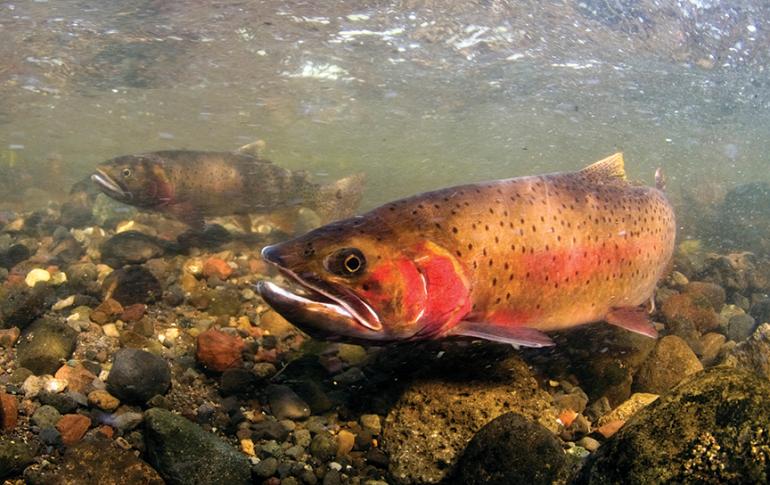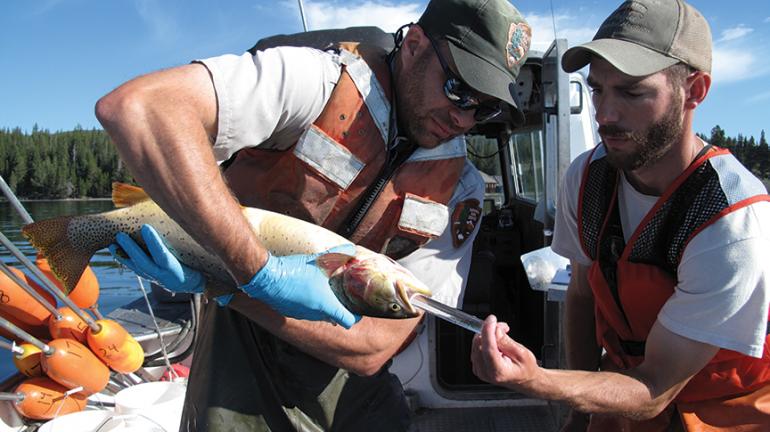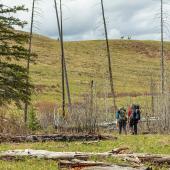Cutthroat Comeback
Restoring a Yellowstone native.
In 1994, Yellowstone National Park officials discovered that non-native lake trout had been illegally introduced to Yellowstone Lake and were decimating the cutthroat population. A poster-child species of the Park, the iconic cutthroat were a staple in the diet of land- and water-based animals including grizzly bears, otters, and bald eagles, not to mention a huge draw for anglers and tourists. “If you find dusty old photos of the family in Yellowstone Park in the 1940s, inevitably there’s a kid and his dad holding up a big stringer of Yellowstone cutthroat,” Bruce Farling, executive director of Montana Trout Unlimited recalls. “You’ll find that in attics all over the country.”
For many years, the Park Service attempted to suppress lake trout populations, as they’re of little benefit to foraging wildlife because they never leave the lake to spawn. They’re also piscivorous, or fish-eating, which led to a massive drop in cutthroat numbers. Initial suppression efforts were met with limited success. “We’d just go out and smack as many as we could. It wasn’t done very methodically because we didn’t know quite how to do it,” says Farling. In the last half-decade, however, the Park Service has partnered with area nonprofits and researchers for a different approach. By understanding the lake trout’s movement and life-cycle within the lake, suppression efforts have become more efficient and successful. The project started with population modeling, then researchers tagged mature lake trout and began tracking their movement. This helped identify major spawning grounds, which were targeted with gillnets during late summer and fall. It also helped researchers track how lake trout respond to different lake conditions, including temperature.
The results show that lake trout age classes are compressing—fewer large and small fish—which indicates that population growth may be slowing. “With very few spawning fish, the lake trout can’t keep reproducing,” Farling says. As lake trout population growth slows, Yellowstone cutthroat numbers are increasing. “For a long time we were only seeing large adult cutthroats—the population wasn’t replacing young fish, probably because they were being eaten,” Farling explains. The Yellowstone cutthroats are also spawning in tributaries that have been unoccupied by the native fish for years, further indicating a resurging population.
This ongoing study doesn’t come without its critics—the 1.5 million-dollar annual gillnetting, monitoring, and research price tag being a chief complaint. Farling believes, however, that the 2014 data shows it has been money well spent. “We’re seeing bears forage on some of these tributaries, so that’s a good sign too,” Farling explains.
The Park Service and its partners are unlikely to eradicate lake trout completely, but they can give the cutthroat a fighting chance. “The [Yellowstone] cutthroat fishery is probably one of the most famous fisheries in the world. None of the local populations are as robust as that lake was; it was tremendous,” Farling recalls. Now with cautious optimism, there’s many a tourist, angler, and hungry grizzly bear celebrating.















